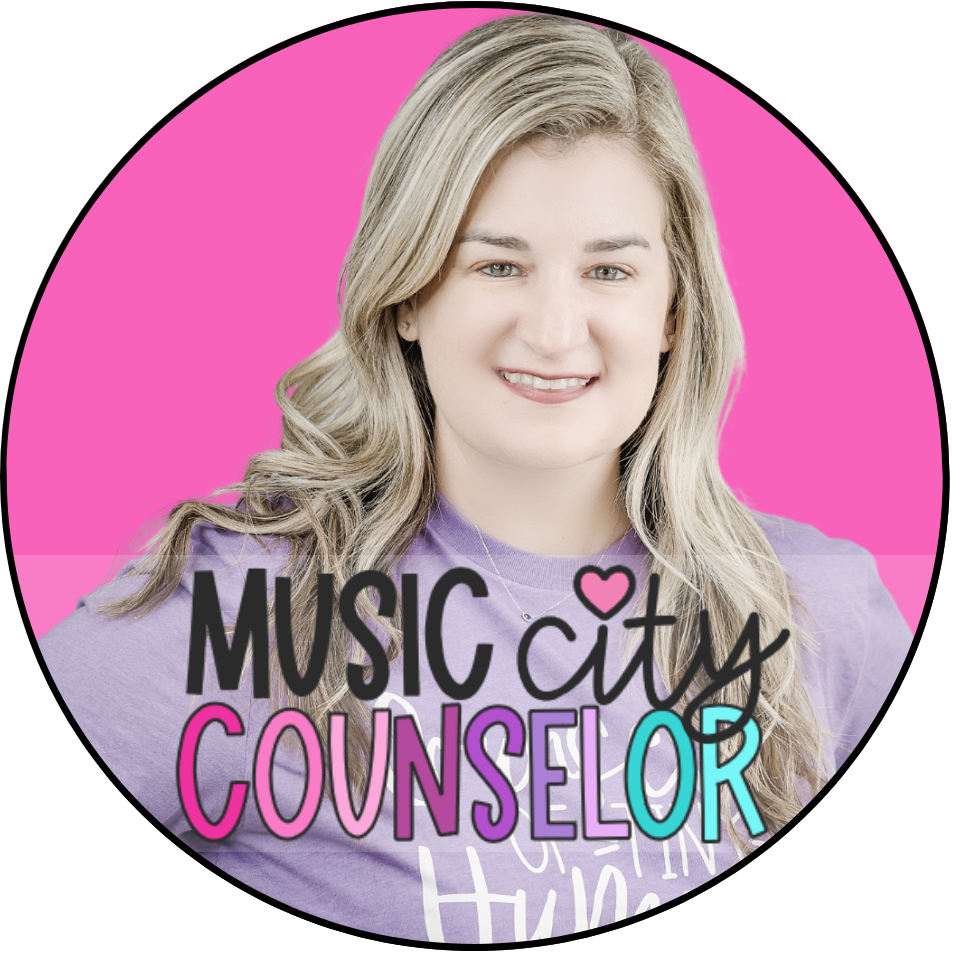
Hey y’all! Thanks so much for stopping by. My name is Laura and I am an Elementary School Counselor turned Curriculum Writer. At my precious school in Nashville, TN, 97% of my students were living in …
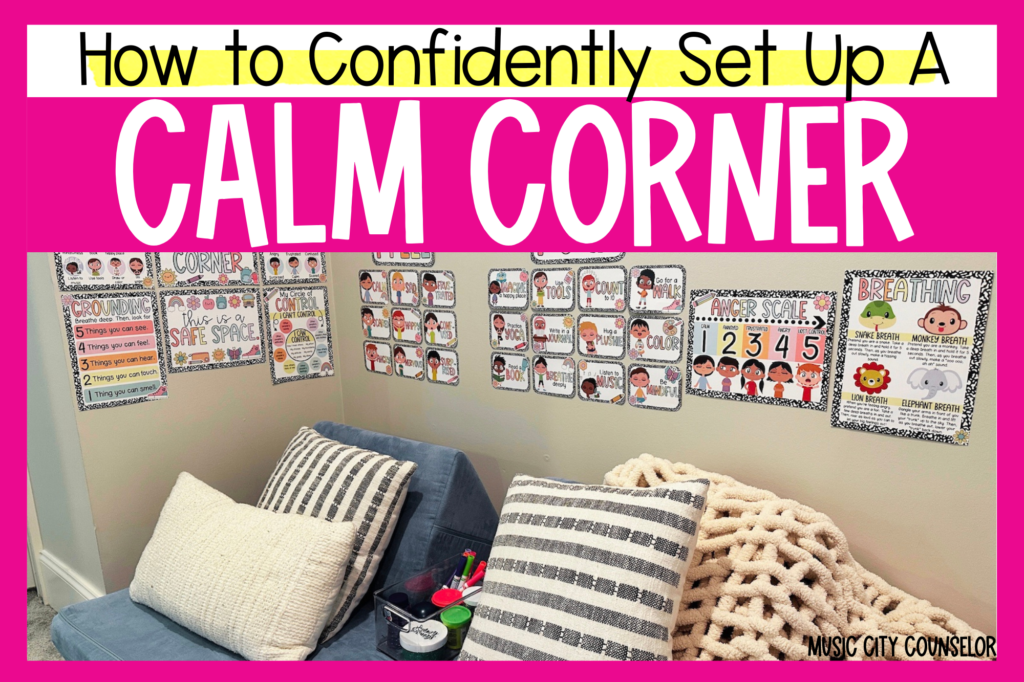
Life as an elementary schooler can be a roller coaster with many ups and downs throughout the day. Sometimes students need a safe place to take a break and regroup. A Calm Corner is exactly this!
Let’s dive into all you need to know about how to confidently set up and implement a Calm Corner that’s beneficial to your students!
A Calm Corner is a soothing, safe space where students can deescalate from big emotions, practice calming strategies, and work on their self-regulation.
Calm Corners are NOT “time-out” spots, or disciplinary in any way. They are a positive, reinforcing place that students choose to go to cope with big feelings.
It is a safe space without punishment.
With practice, students will learn to:
All students can benefit from a Calm Corner. This space is for any child whose emotions are running high, and who needs support to regain physical and social-emotional control of their body.
Having a Calm Corner in your classroom or counseling office can make a world of a difference in student behavior, self-management, independence, and self-control.
You really don’t need much room to create a calming space that benefits your students. The goal isn’t a grandiose size, but instead an intentionally crafted area that allows students to consider how they’re feeling and work towards feeling calm again.
Consider including:
*if you don’t have room for a tent, consider another way to divide the space from the rest of your room. A tension rod with a curtain or the back of your bookshelf are other terrific options!
Here is some inspiration for you!
I created this set-up with my Calm Corner visuals set!
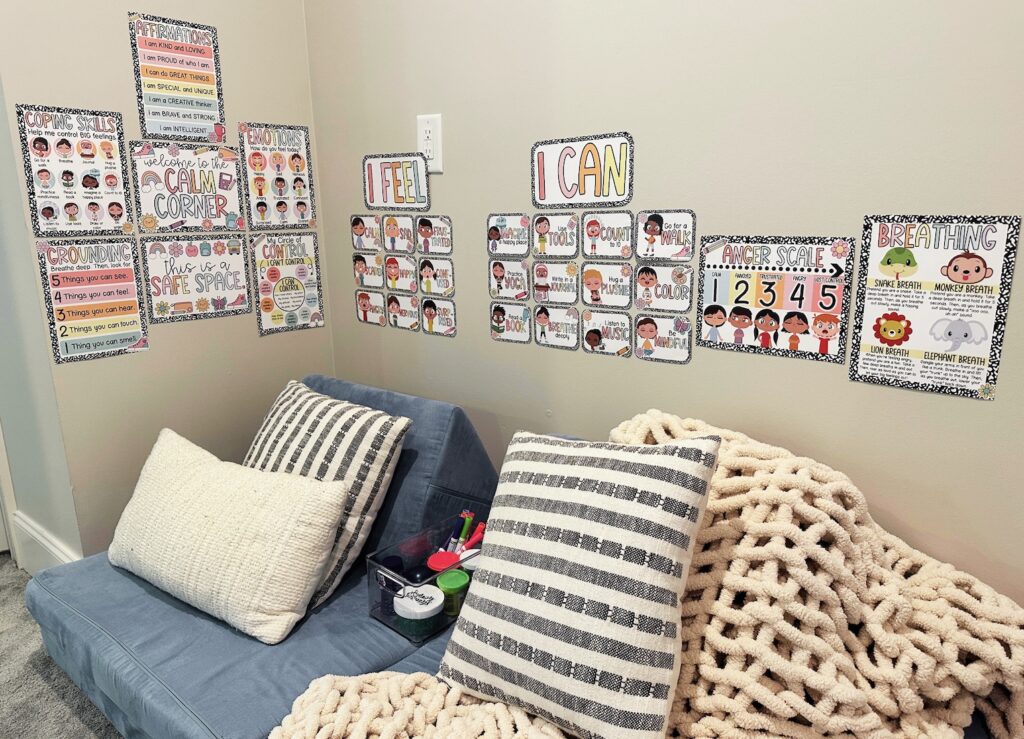
And here are some amazing Calm Corner samples from other school counselors like you!
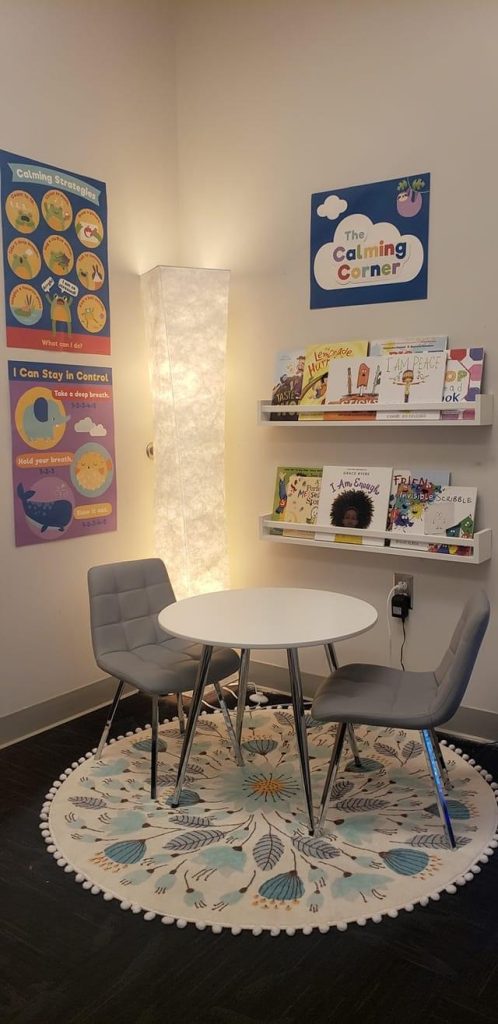
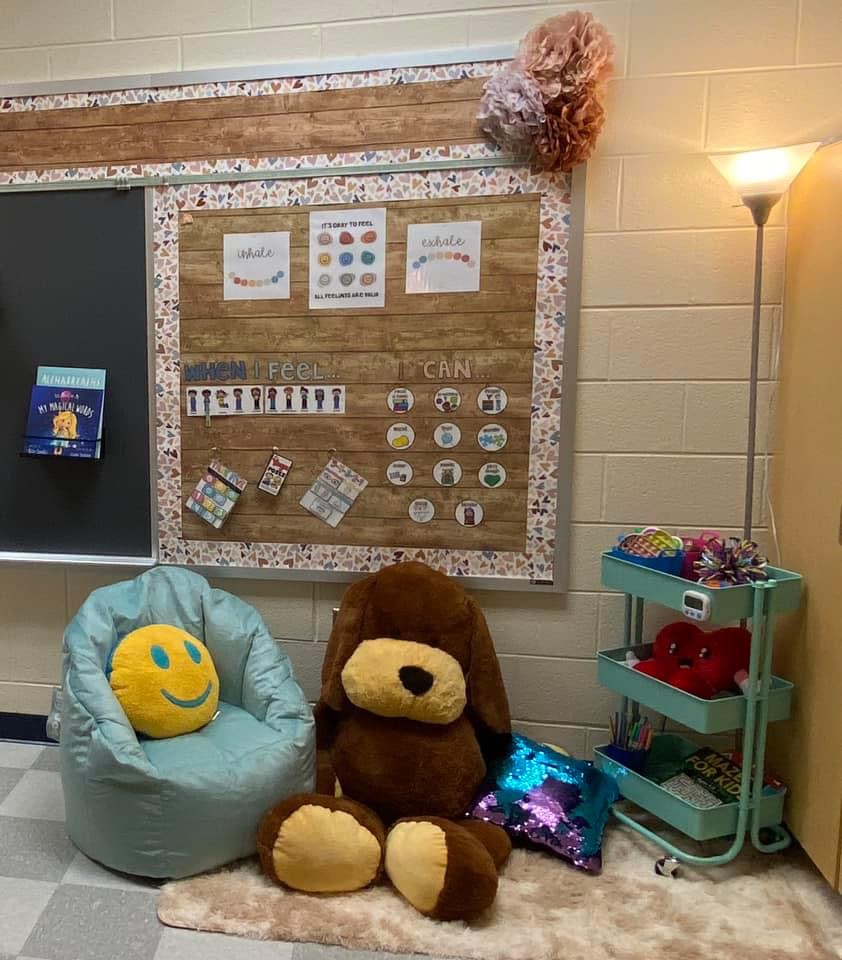


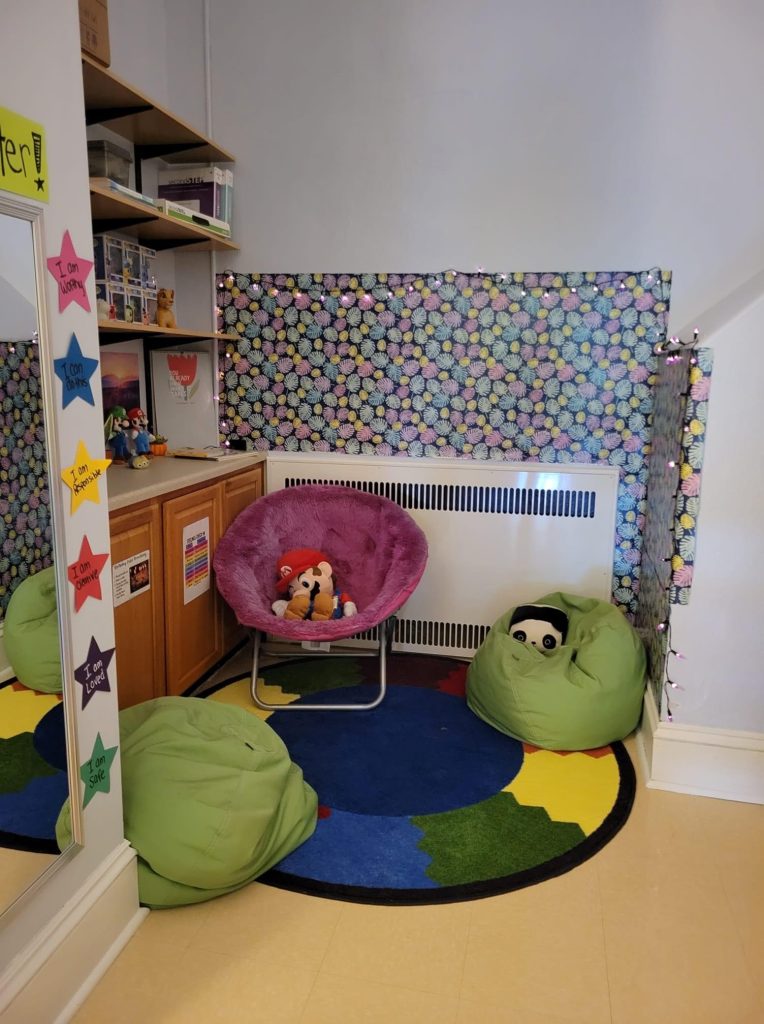
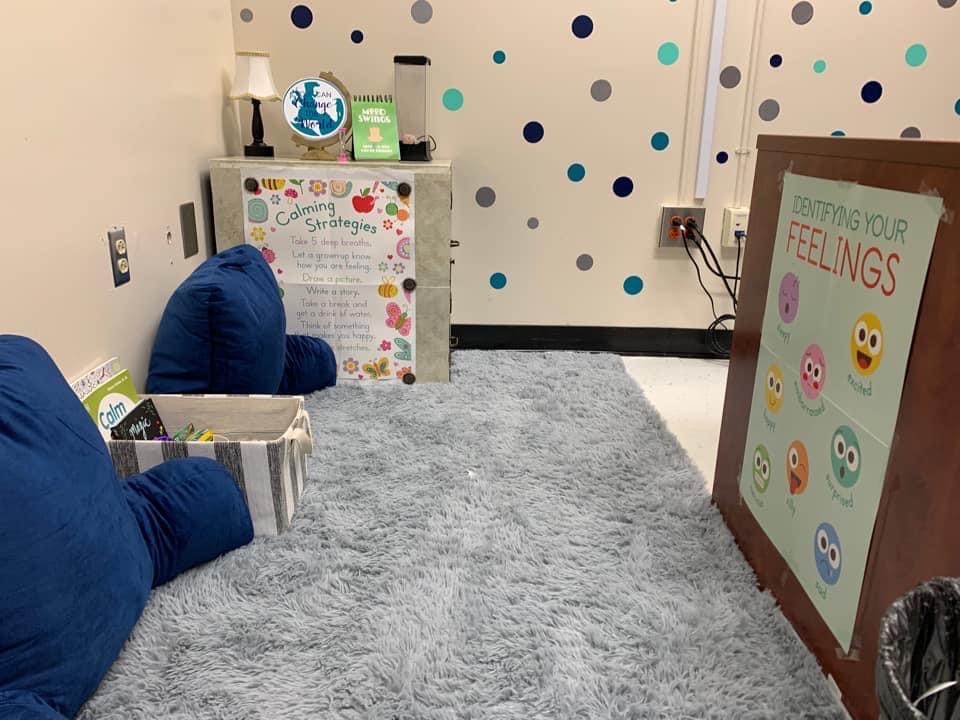

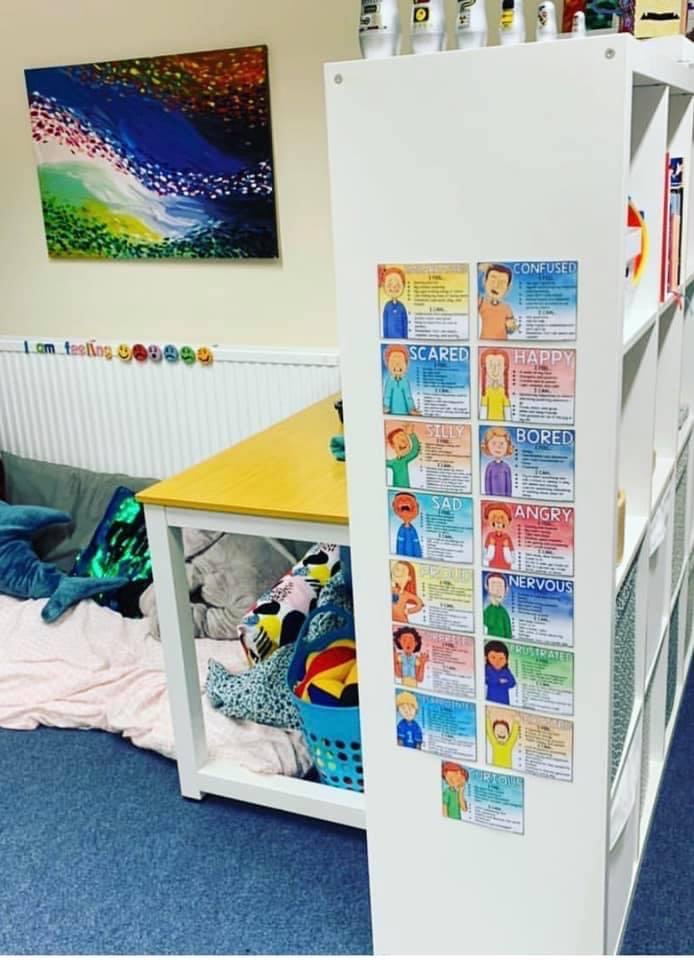
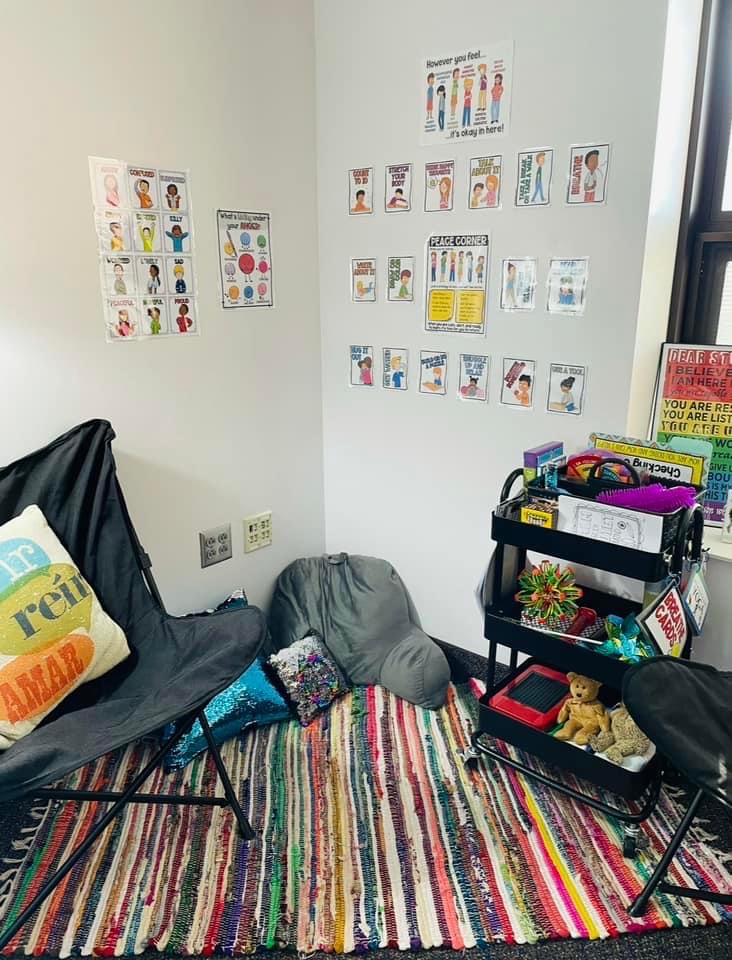
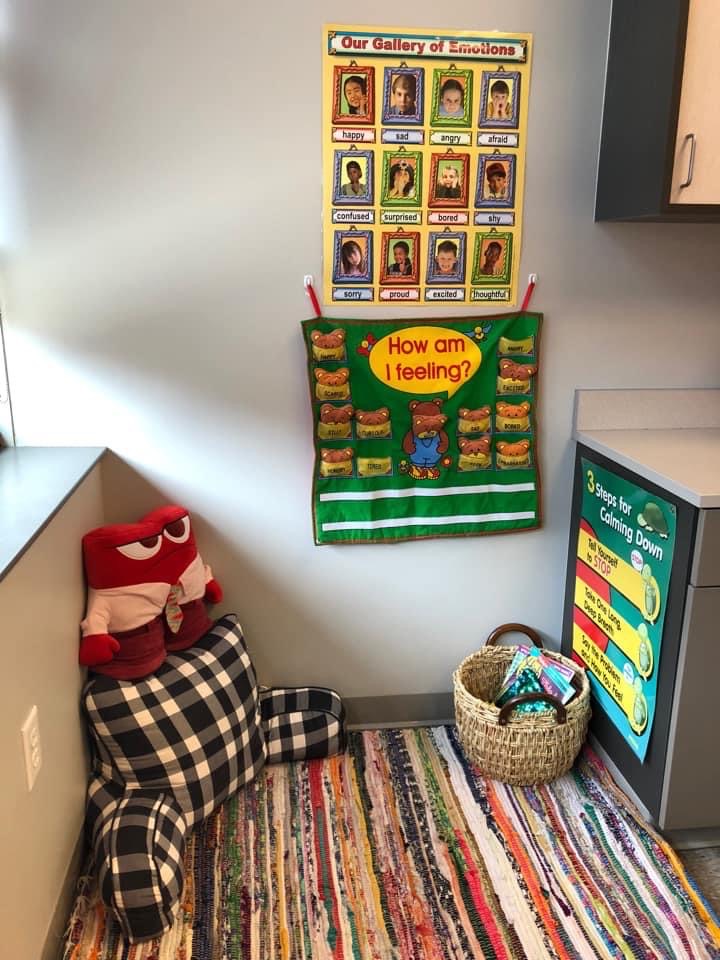


(Photos by: Laura Beth Josar Zaharakis, Molly Miller, Ary Gomez, Youth Intervention Centre, James Norman, Erin Mc, Aubrey Michelle, Tara Goodwin, Kaylei Jones, & Counselor Kait).
(Resources by Music City Counselor, The Responsive Counselor, & Speckled Moose Counseling).
Appropriate visuals are key in setting up an effective Calm Corner for your students. Oftentimes, students dealing with big feelings are not ready to talk or don’t have the language to express their emotions quite yet.
Visuals help bridge this gap while still providing support for social-emotional skills and encouraging self-regulation skills. Visual aids also encourage independence and self-reliance in students.
Display posters that help students identify their emotions and practice coping skills like taking deep breaths, counting from one to ten, and imagining a happy place.
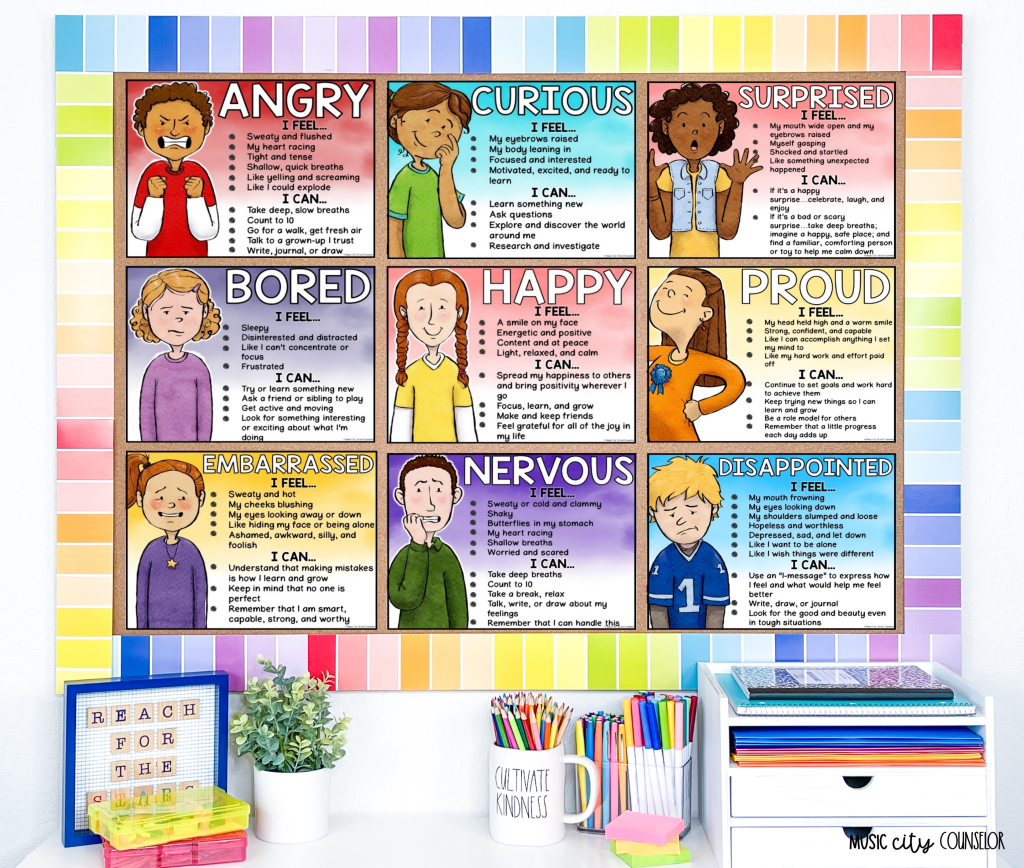

Bilingual feelings charts are a great resource for diverse populations.
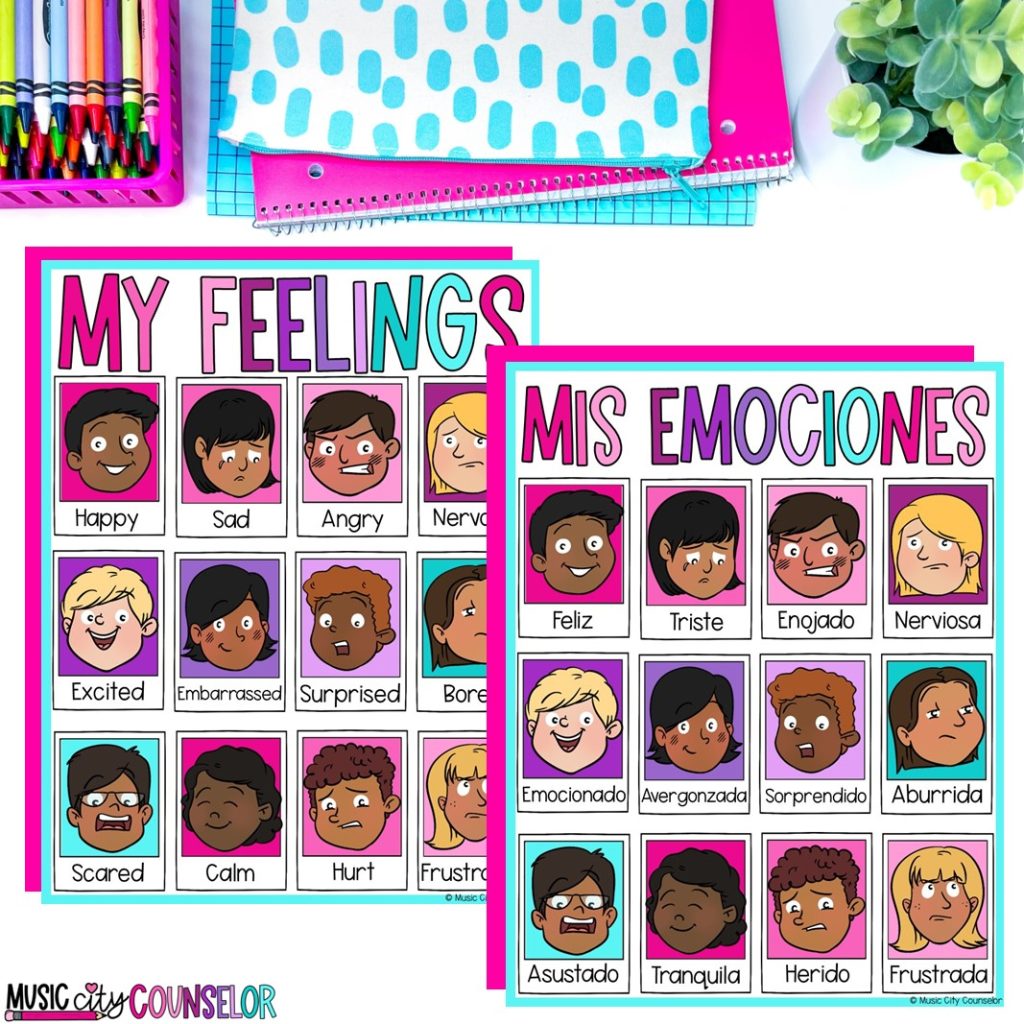
Display visual options for calming sensory tools, too!

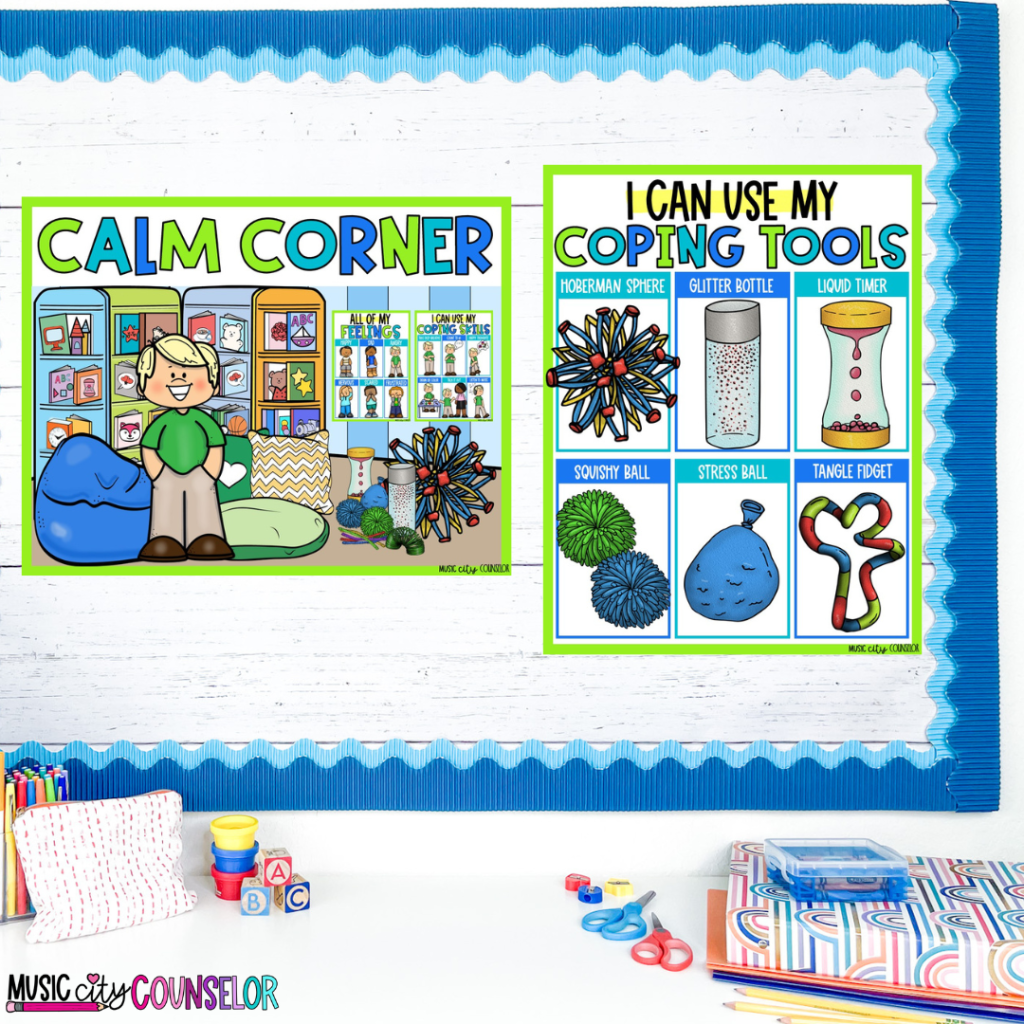
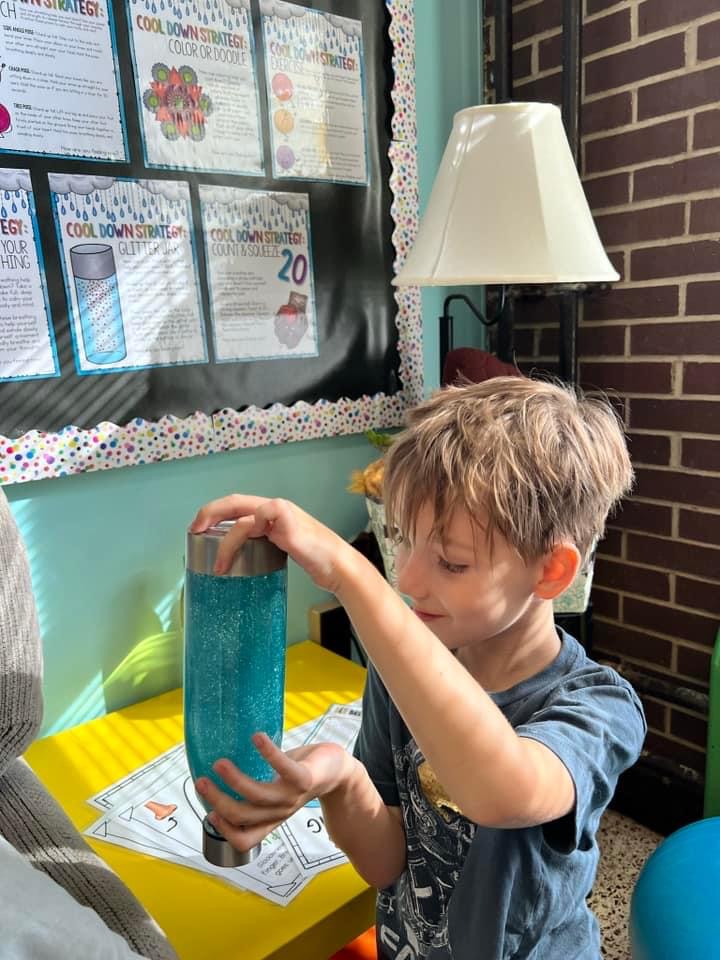
(Photo by Rachel Minick).
Including appropriate calming tools is another essential piece of creating a meaningful Calm Corner. You likely have many of these items laying around your office already!
Some of my favorites are:

(Amazon Affiliate Links)
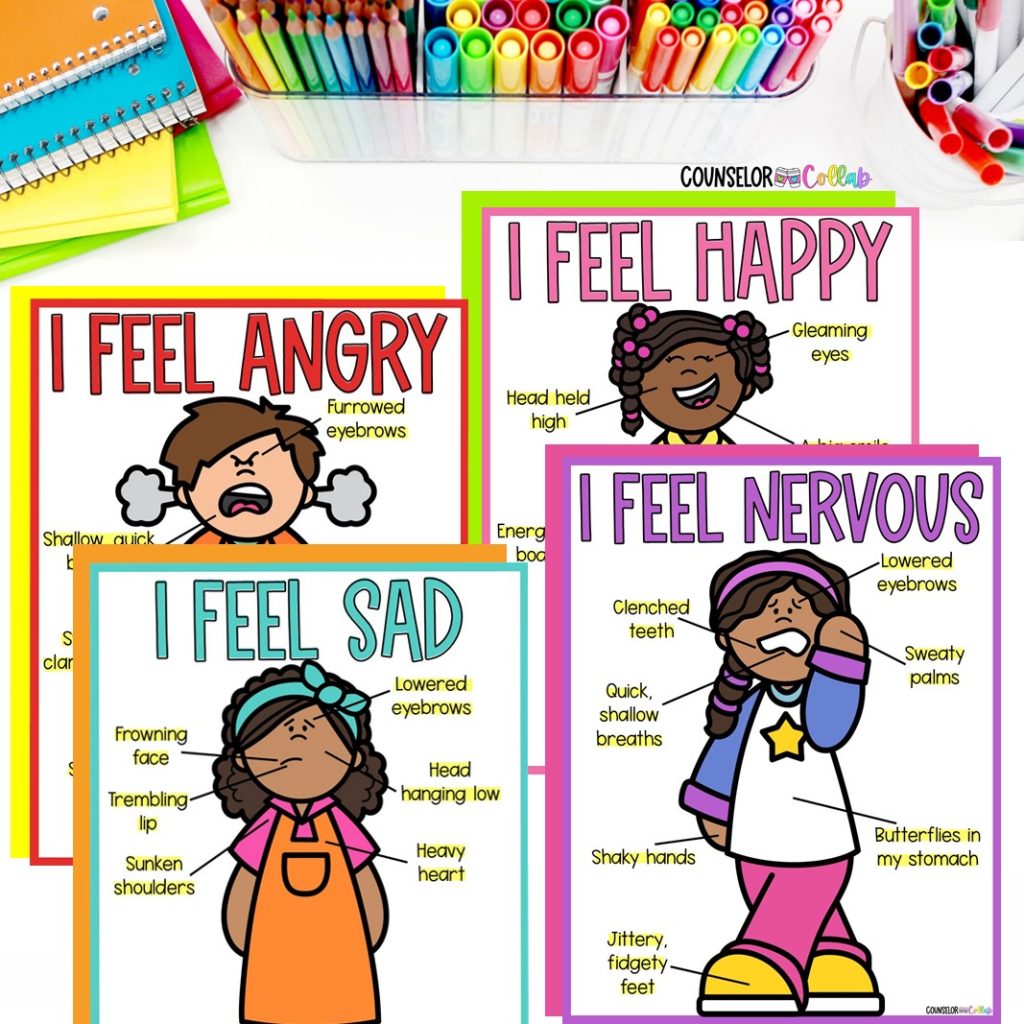
Now that you know how to set up your Calm Corner, it’s time to teach your students how to use it! Teaching students social-emotional skills requires explicit, step-by-step directions, just like teaching them reading and math!
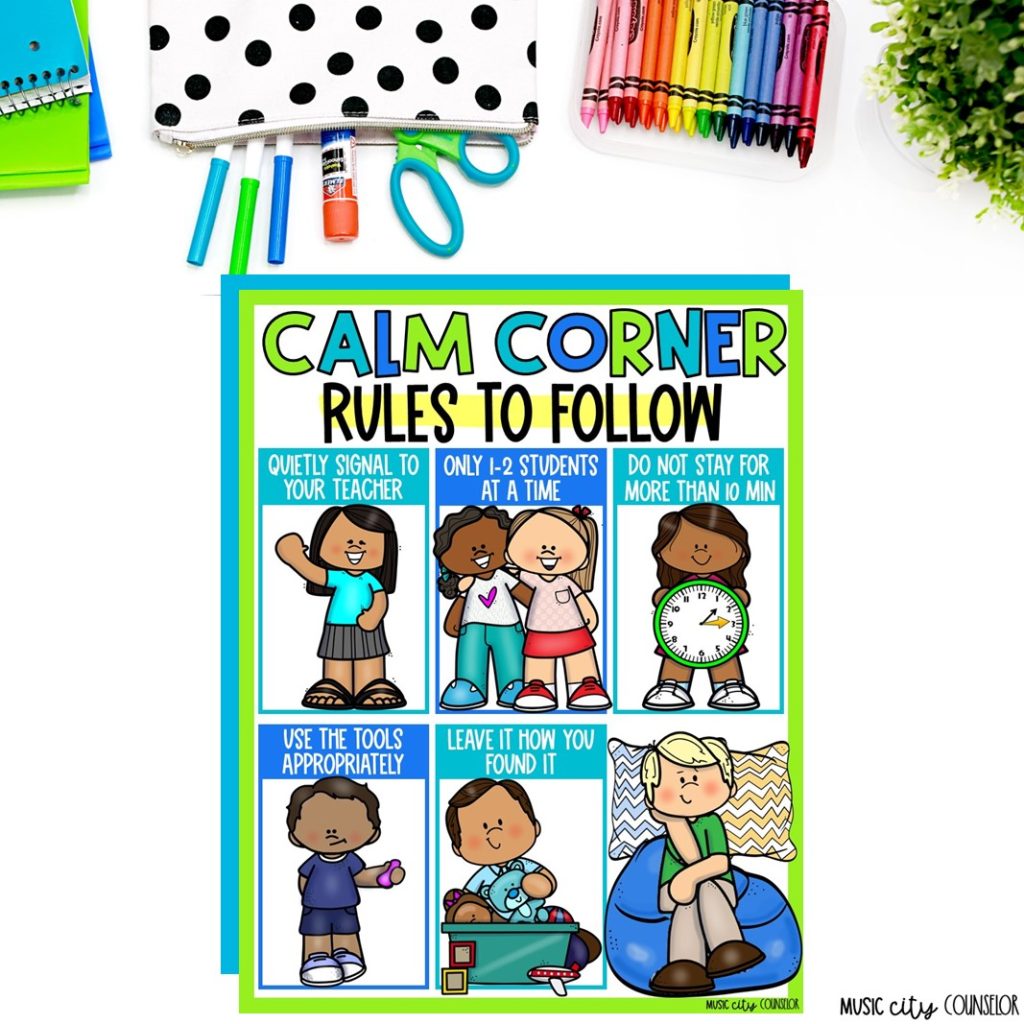
To make sure students use your Calm Corner appropriately, safely, and effectively, start by teaching them these five rules (and post them in your space):
You can grab this free poster here and in my Free Resource Library!
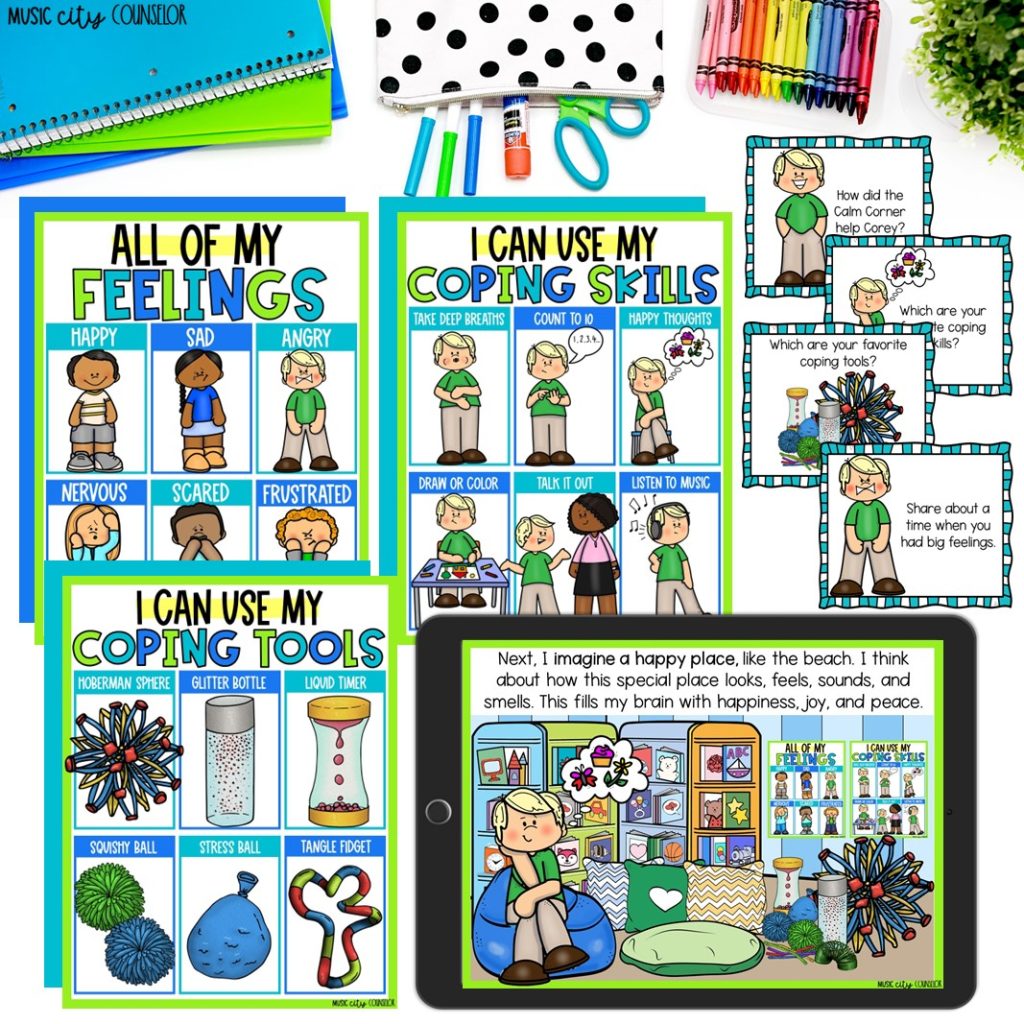
To make this whole process easier on you, and to encourage a smooth learning process and transition for your students, I created this lesson. Students listen to a story about a little boy named Corey who learns to manage his feelings in the Calm Corner in his classroom. Students learn:
This resource also includes posters and visuals to use in your space, discussion cards, a craft, worksheets, and coloring pages! I highly recommend teaching this lesson before introducing the Calm Corner to students so they feel prepared and ready to start using this special space!
Here are some additional tips for teaching students how to use your Calm Corner:
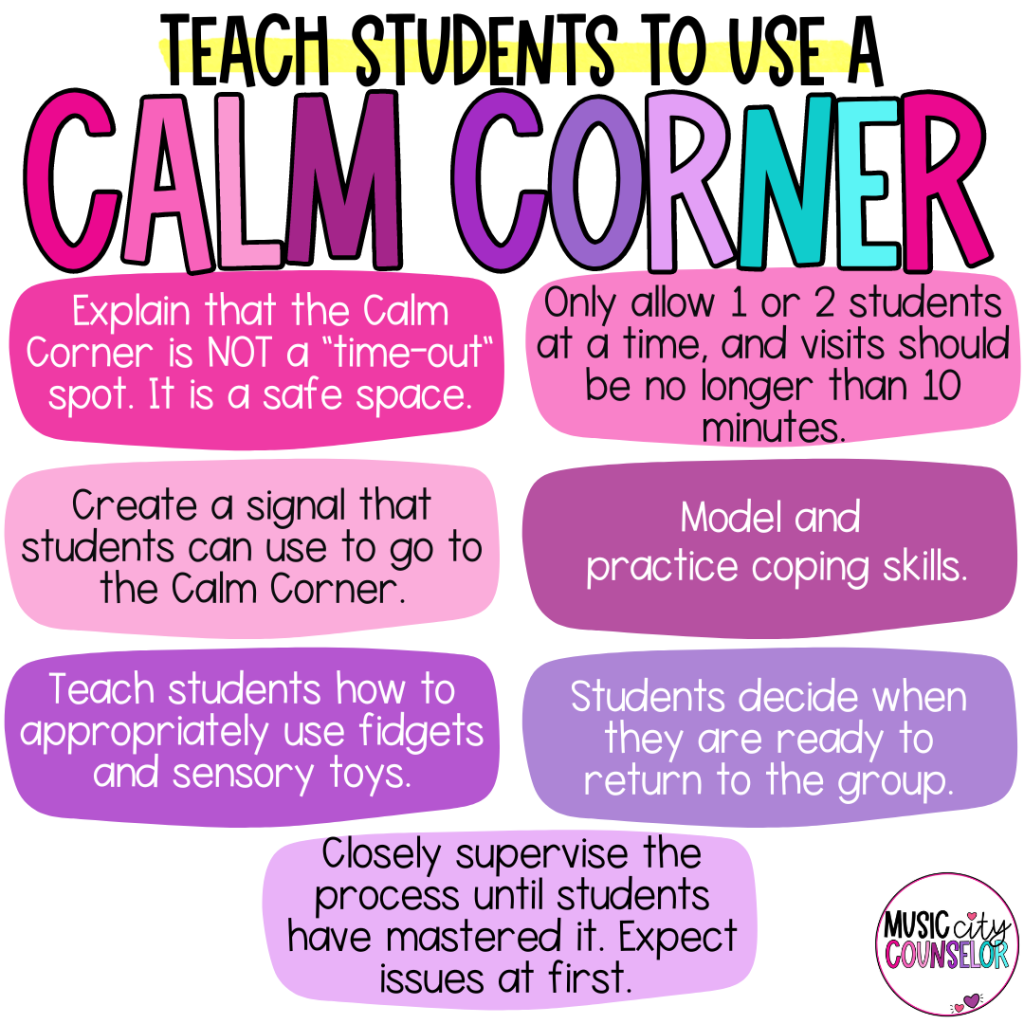
Your students’ social-emotional well-being will benefit SO MUCH from this addition to your space.
I’d love to see pictures of your Calm Corner. Send me a DM or tag me on IG!
You might also be interested in:
Feeling overwhelmed with how to meet the needs of all of your students? Take the load off by checking out our Counselor Collab Membership! It’s your one-stop-shop for ALL THINGS school counseling including done-for-you lessons, activities, and small-group curriculum. The ongoing support you’ll find through the Counselor Collab Facebook Community is unmatched. I’d love to meet you there!

| Cookie | Duration | Description |
|---|---|---|
| cookielawinfo-checkbox-analytics | 11 months | This cookie is set by GDPR Cookie Consent plugin. The cookie is used to store the user consent for the cookies in the category "Analytics". |
| cookielawinfo-checkbox-functional | 11 months | The cookie is set by GDPR cookie consent to record the user consent for the cookies in the category "Functional". |
| cookielawinfo-checkbox-necessary | 11 months | This cookie is set by GDPR Cookie Consent plugin. The cookies is used to store the user consent for the cookies in the category "Necessary". |
| cookielawinfo-checkbox-others | 11 months | This cookie is set by GDPR Cookie Consent plugin. The cookie is used to store the user consent for the cookies in the category "Other. |
| cookielawinfo-checkbox-performance | 11 months | This cookie is set by GDPR Cookie Consent plugin. The cookie is used to store the user consent for the cookies in the category "Performance". |
| viewed_cookie_policy | 11 months | The cookie is set by the GDPR Cookie Consent plugin and is used to store whether or not user has consented to the use of cookies. It does not store any personal data. |